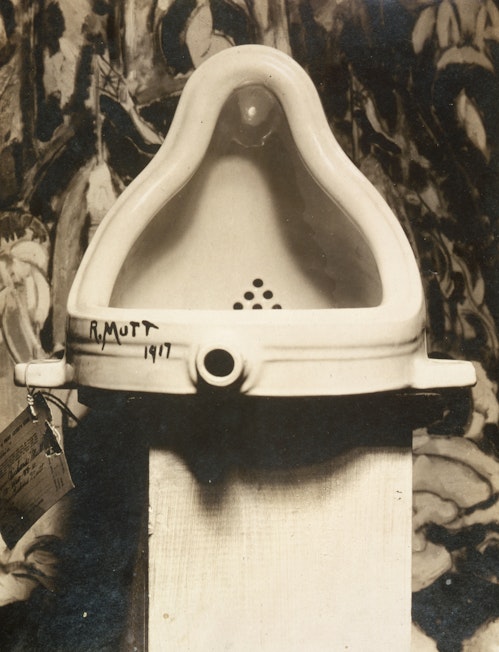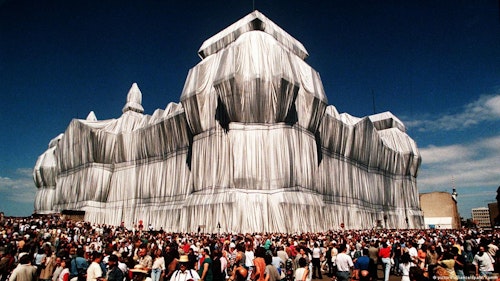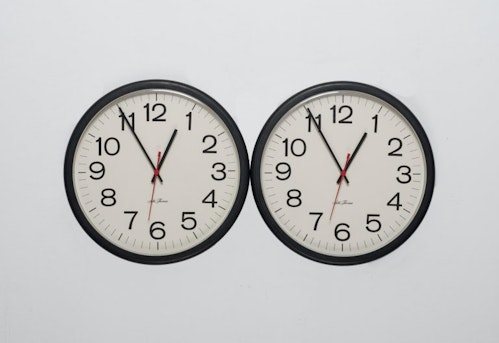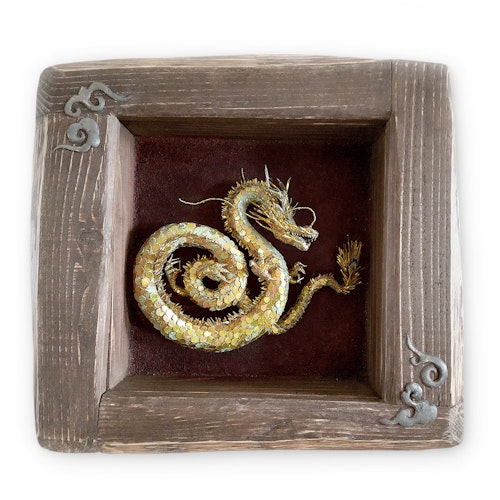What image comes to mind when you hear the term "contemporary art"?
There are eccentric objects, beautiful and pop-like paintings with rich colors, and very simple works that make you feel as if you could make them yourself.
Contemporary art is constantly expressing and challenging various orders of the world. Beyond the realm of arts and crafts, photography, painting, and sculpture, artists are expressing themselves through their works and appealing to contemporary society. Contemporary art may be the form of artists who want to express something in response to the increasing unemployment, deteriorating public safety, and social inequality.
In this issue, we would like to introduce some of the works of interesting artists who have created unusual contemporary art.
It is interesting to learn about them! Fascinating contemporary artists and their representative works
Marcel Duchamp

Representative work: "Fountain" (1917)
Marcel Duchamp is also known as the "father of modern art.
His 1917 work, Fountain, was simply an overturned male urinal signed "R. Mutt.
The work was housed in a museum before being sold by a private individual for 220 million yen (US$185 million) in 2002.
Since that time, there have been many people who have said, "This is not a work of art! Why would anyone pay such a high price for such a work of art? Why would such a thing fetch such a high price?
However, these questions are precisely what Duchamp was aiming for.
Before Duchamp, artists such as Impressionists and Cubists, whose work was innovative in terms of classical art, created works that were "interesting to the eye.
Duchamp, however, criticized such works, calling them "retinal paintings," and insisted that his works were "enjoyable to think about.
Certainly, a urinal that is merely signed is not beautiful and is not something one would rather actively look at, which is why the display of such an object in a museum, i.e., packaging it, is what creates "art.
(Incidentally, the signed name, "R. Mutt," is a creative name that is a play on Mott Works, an American manufacturer of sanitary products. (Incidentally, the name "R. Mutt" was a play on the name of an American sanitary product manufacturer called Mott Works, and was therefore a highly improvised name.)
Duchamp's greatness lies in the fact that he did not focus on the "object," but rather placed value on the uniqueness of the "way of thinking" and "way of seeing," and focused on the degree to which he could upset the viewer's sense of value.
Christo & Jeanne-Claude

Major works: "Wrapped German Parliament" (1971-1995)
Christo and Jeanne-Claude are a husband and wife team of contemporary artists.
Her husband, Christo, was born in Bulgaria and studied at the Art School in Sofia and the Academy of Fine Arts in Vienna before moving to Paris in 1958, where he worked on portraits and fabric packaging of cans and industrial products in his early years.
Jeanne-Claude was born in Morocco and studied Latin and philosophy at the University of Tunis. In Paris, she met Christo and together they began exhibiting their work in public spaces.
The two spent an enormous amount of time and effort on a project that involved wrapping and covering public buildings and other structures with large pieces of fabric.
In this work, the parliament building in Berlin, the capital of Germany, is completely wrapped in fabric.
During the two-week exhibition, approximately 5 million people from all over the world attended, making it an event of such scale that it will go down in German cultural history.
It is said that it took Christo and Jeanne-Claude 23 years and 700 pages of application documents to bring this project to fruition.
Why did they put such an enormous amount of time and effort into this?
They recognized as art only that which is as fleeting and vanishing as a single raindrop.
Their project consumes enormous amounts of energy and money to realize, but it is quickly dismantled and the materials discarded or distributed after a two-week exhibition.
A dream-like phenomenon that lasts for a moment.
The uniqueness and innovation of the couple is recognized in the fact that they have realized, on a scale rarely seen in history, a boundless beauty with that one-time nature as a major element.
Olafur Eliasson

Major work: "The weather project" (2003)
Olafur Eliasson is a Danish-born contemporary artist of Icelandic descent.
He is known for his large-scale installations that use sculpture and natural elements such as light, water, and temperature to create site-specific "natural" experiences for viewers.
In 1995, he founded Studio Olafur Eliasson in Berlin, an institute for spatial cognition.
In 2003, he successfully exhibited his "Weather Project" at the Tate Modern in London, and in the same year, he was selected to represent Denmark at the Venice Biennale, which brought him much critical acclaim.
He is currently one of the most influential artists in the world.
In this work, he created a space for people to view and talk with each other by recreating a light source in colors with a temperature similar to that of the sun in a museum.
At first glance, his work deals with a very simple phenomenon.
In reality, however, the work has a depth that makes one think philosophically about experiencing, mediating, and representing nature.
Felix Gonzalez-Torres

Major works: "Untitled (Perfect Lovers)" (1987 - 90)
Felix Gonzalez-Torres, who lived a minority life as a homosexual and a native of Cuba, used two clocks to represent the two different times he and his lover, who died of AIDS, lived their lives together.
His use of everyday motifs can also be seen in his other works, for example, a large collection of candies in the corner of a room.
His work is very sophisticated and cleanly rendered, giving the viewer a minimalist impression.
His works, which inspire us to reconsider notions of love, death, homosexuality, tolerance, and time, will always stimulate our senses, regardless of the particular era in which they are created.
Hiroshi Sugimoto

Representative works: "Seascape" series (1980-) / "Arctic Ocean, Norr Cup II" (1989)
Sugimoto consistently explores concepts and methods to capture the accumulation and flow of time that transcends individual existence.
He has also been greatly influenced by the conceptual art of the 1960s, and has been involved in the reworking of Duchamp's "Large Glass" works out of respect.
The "Seascape" series is based on the concept that "the search for a common and universal landscape that humans can see led me to the horizon of the sea, and I will photograph the same landscape in seas and lakes around the world.
The concept of this project was to "explore how the first human being saw the ocean."
How did the first humans feel when they saw the sea?
Is it possible for modern humans to see the same landscape that the ancients saw?
Based on these ideas, Sugimoto's photographs of the sea in various locations, taken with strictly identical techniques, are stripped of their human-assigned identities of specific locations.
Sugimoto's "true" photographs have a philosophical depth different from that of other photographers.
Introducing TRiCERA's recommended artists
IIISU

IIISU 2022.09.11
IIISU" is the generic name and the team's trade name for the pipe chairs that have been transformed into "works that share a life together.
This project began from our dissatisfaction with the current state of pipe chairs, which are often thrown away when they are broken, despite their presence at entrance ceremonies, graduation ceremonies, and various other memorable occasions.
We want to change the fact that even the "memories and feelings that reside in objects" are thrown away with them. This is the idea behind this work.
By transforming a pipe chair that has fulfilled its role into a "cool," "cute," and "comfortable" IIISU, we aim to create an existence that will be used with love and care, and to create an opportunity to reconsider our sense of values.
masami ohno

Gold Dragon
W 30.00cm x H 26.00cm / ¥60,000
The gold dragon is one of the mythical beasts of Chinese mythology.
Because of its central role and the color it symbolizes, it is considered to be a lucky charm for demonstrating leadership and generating gold.
The can's glow is transformed by natural light and illumination, allowing the viewer to enjoy the work even more.
The frame is also made of old wood to match the image of the work.
M. Febriandy

Camouflage
W 35.00cm x H 45.00cm / 198,000Yen
This painting was inspired by a poem.
It is an expression of camouflage, enjoying emptiness, drained of emotion, and busy drowning in almost blind despair.
Camouflage is a means of survival, and it is portrayed by disguising appearances, attitudes, colors, and emotions between the outside and the inside.
It can be described as a fusion of painting and writing.
TRiCERA ART members enjoy a variety of benefits and preferences.
- Discounts, including members-only secret sales and coupons
- Create My Collection by registering your favorite artists
- Receive updates on popular artists, exhibitions, and events
- Receive a weekly newsletter with selected art
- Personal Assessment to find out what kind of art you like.
Please register as a member for free and receive the latest information.
Free Member Registration